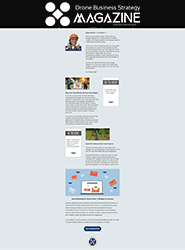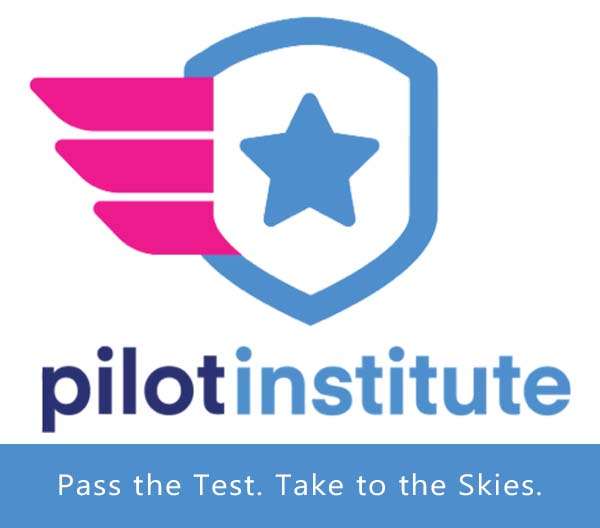
In the fast-paced world of commercial drone operations, the ability to secure jobs hinges not only on technical expertise but also on effective pitching and marketing strategies. While finding work as a drone pilot is essential, mastering the art of pitching your services is equally critical in standing out amidst fierce competition.
In this expanded article, we present an 8-step plan tailored to help commercial drone pilots not only find work but also master the art of pitching their services to potential clients.
Step 1: Define Your Unique Value Proposition
Before pitching your services, articulate your unique value proposition. What sets you apart from other drone pilots? Whether it’s your specialization in capturing breathtaking aerial footage, your expertise in precision mapping, or your commitment to delivering unparalleled customer service, identifying your unique strengths will form the foundation of your pitch.
Before pitching your services, it’s crucial to define your unique value proposition to distinguish yourself in a competitive market. Here’s how to go about fulfilling this step:
Step 1a: Conduct a Self-Assessment
Begin by conducting a thorough self-assessment to identify your strengths, skills, and areas of expertise. Reflect on your past experiences, projects, and successes to pinpoint what sets you apart from other drone pilots.
Step 1b: Identify Your Specialization
Next, narrow down your focus and identify your specialization within the drone industry. Consider your passion, expertise, and the unique value you can offer to clients. Whether it’s aerial photography, videography, surveying, mapping, or agricultural analysis, choose a niche where you can excel and differentiate yourself.
Step 1c: Determine Your Unique Selling Points
Once you’ve identified your specialization, determine your unique selling points that set you apart from competitors. This could include your advanced skills in capturing stunning aerial footage, your proficiency in conducting precise mapping and surveying, or your dedication to delivering exceptional customer service. Highlighting these unique strengths will form the foundation of your pitch and attract potential clients.
Step 2: Research Your Target Audience
Tailor your pitch to resonate with the specific needs and preferences of your target audience. Conduct thorough research to understand their pain points, priorities, and objectives. Whether you’re targeting real estate agents, construction firms, agricultural companies, or event planners, customizing your pitch demonstrates your understanding of their unique challenges and positions you as a valuable solution provider.
Tailoring your pitch to resonate with your target audience requires thorough research and understanding of their needs. Here are three steps to fulfill this crucial step:
Step 2a: Identify Your Target Market
Begin by identifying your target market or audience segment. Consider the industries or sectors that could benefit most from your drone services. Whether it’s real estate, construction, agriculture, or event planning, pinpoint the specific industries or types of businesses you aim to serve.
Step 2b: Conduct Market Research
Once you’ve identified your target market, conduct comprehensive market research to gain insights into their pain points, priorities, and objectives. Use a combination of online resources, industry reports, and direct feedback from potential clients to understand their challenges and needs related to drone services.
Step 2c: Customize Your Pitch
Armed with insights from your market research, tailor your pitch to address the specific needs and preferences of your target audience. Highlight how your drone services can provide solutions to their challenges and help them achieve their objectives. Whether it’s showcasing the benefits of aerial photography for real estate listings or demonstrating the efficiency of drone mapping for construction site monitoring, customizing your pitch demonstrates your understanding of their unique requirements and positions you as a valuable solution provider.
Step 3: Craft a Compelling Pitch Deck
Create a visually engaging pitch deck that highlights your expertise, showcases your past projects, and communicates the benefits of your services concisely. Include compelling visuals, success stories, and testimonials to captivate your audience’s attention and reinforce your credibility. A well-crafted pitch deck serves as a powerful tool for making a memorable impression and persuading potential clients to choose your services.
Creating a captivating pitch deck is essential to making a memorable impression on potential clients. Here are three steps to help you fulfill this step:
Step 3a: Define Your Objectives
Before diving into the design process, clearly define the objectives of your pitch deck. Determine what key messages you want to convey and the actions you want your audience to take after viewing the presentation. Whether it’s securing a meeting, gaining approval for a project, or closing a deal, outlining your objectives will guide the content and structure of your pitch deck.
Step 3b: Design Visually Engaging Slides
Focus on creating visually engaging slides that effectively communicate your expertise and the benefits of your services. Choose a clean and professional design layout that enhances readability and visual appeal. Incorporate high-quality images, graphics, and multimedia elements to illustrate your points and captivate your audience’s attention. Remember to maintain consistency in branding and formatting throughout the presentation to ensure a polished and cohesive look.
Step 3c: Showcase Your Expertise and Success Stories
Highlight your expertise and credibility by showcasing past projects, success stories, and client testimonials in your pitch deck. Use case studies, before-and-after comparisons, and real-world examples to demonstrate the effectiveness of your services and the tangible results you’ve achieved for clients. Including compelling visuals and testimonials adds authenticity and credibility to your pitch, making it more persuasive and impactful.
By following these steps and crafting a compelling pitch deck, you can effectively communicate your value proposition, captivate your audience’s attention, and increase your chances of securing new clients and opportunities.
Step 4: Practice Your Pitch
Hone your pitching skills through practice and rehearsal. Familiarize yourself with your pitch deck, refine your delivery, and anticipate potential questions or objections from clients. Practice speaking confidently and passionately about your services, emphasizing the value you can deliver and addressing any concerns proactively. A polished pitch instills confidence in potential clients and increases your chances of success.
Perfecting your pitch requires dedicated practice and refinement. Here are three steps to help you hone your pitching skills effectively:
Step 4a: Familiarize Yourself with Your Pitch Deck
Start by thoroughly familiarizing yourself with the content of your pitch deck. Memorize key points, transitions between slides, and any supporting data or visuals. Understanding the flow of your presentation will help you deliver it smoothly and confidently during pitches.
Step 4b: Rehearse Your Delivery
Practice delivering your pitch multiple times, either alone or in front of a trusted friend or colleague who can provide feedback. Pay attention to your tone of voice, pacing, and body language. Aim to convey enthusiasm and confidence while maintaining a professional demeanor. Rehearsing your delivery helps you identify areas for improvement and build confidence in presenting your services to potential clients.
Step 4c: Anticipate Questions and Objections
Anticipate potential questions or objections that clients may raise during your pitch, and prepare thoughtful responses in advance. Consider common concerns related to pricing, timelines, deliverables, or competition, and craft persuasive answers that address these issues proactively. Being prepared to address objections demonstrates your professionalism and expertise, instilling confidence in potential clients and increasing your chances of success.
By following these steps and dedicating time to practice and refine your pitch, you can enhance your pitching skills, deliver compelling presentations, and effectively communicate the value of your services to potential clients.
Step 5: Tailor Your Pitch to Each Client
Avoid delivering a one-size-fits-all pitch and instead customize your presentation to address the specific needs and preferences of each client. Incorporate relevant examples, case studies, and industry-specific insights to demonstrate your understanding of their challenges and how your services can provide solutions. Personalizing your pitch shows that you’ve done your homework and positions you as a trusted advisor rather than just a service provider.
Customizing your pitch to resonate with each client’s unique needs is essential for making a lasting impression and winning their business. Here are three steps to help you tailor your pitch effectively:
Step 5a: Research Your Client
Start by conducting thorough research on each client to gain insights into their business, industry, and specific challenges or pain points. Explore their website, social media profiles, press releases, and any recent news or developments related to their organization. Understanding their background and context will enable you to tailor your pitch more effectively.
Step 5b: Identify Client’s Pain Points and Objectives
Once you have a good understanding of your client’s business and industry, identify their key pain points, objectives, and goals. Put yourself in their shoes and consider what challenges they may be facing and what outcomes they are looking to achieve. Tailor your pitch to address these pain points directly and demonstrate how your services can help them overcome challenges and achieve their objectives.
Step 5c: Customize Your Messaging and Examples
Craft your pitch messaging and examples to align with the specific needs and preferences of each client. Incorporate relevant case studies, success stories, and industry-specific insights to illustrate how your services can provide solutions tailored to their unique situation. Avoid using generic or generic examples, and instead, demonstrate your understanding of their business and challenges. Personalizing your pitch in this way demonstrates that you’ve done your homework and positions you as a trusted advisor who can provide tailored solutions rather than just a generic service provider.
By following these steps and customizing your pitch to each client, you can demonstrate your understanding of their needs, build rapport, and increase your chances of winning their business. Tailoring your pitch shows that you’re invested in their success and positions you as a valuable partner rather than just another vendor.
Step 6: Leverage Your Network
Utilize your network to identify warm leads and secure introductions to potential clients. Reach out to industry contacts, former clients, and professional associations for referrals and recommendations. A warm introduction from a trusted source can significantly increase your chances of success and expedite the pitching process.
Harnessing the power of your network can provide valuable opportunities to connect with potential clients and secure new business. Here are three steps to effectively leverage your network in fulfilling this step:
Step 6a: Identify Key Contacts
Start by identifying key contacts within your network who may be able to provide valuable introductions or referrals. These contacts could include former colleagues, industry peers, mentors, clients, or members of professional associations relevant to your field. Consider individuals who have a strong reputation, extensive connections, or direct influence within your target market.
Step 6b: Reach Out and Nurture Relationships
Reach out to your network contacts strategically and nurture relationships over time. Engage in meaningful conversations, offer assistance or support when appropriate, and demonstrate your value as a trusted and reliable professional. Building genuine relationships based on mutual trust and respect increases the likelihood that your contacts will be willing to provide introductions or referrals when opportunities arise.
Step 6c: Request Introductions or Referrals
When the time is right, politely and professionally request introductions or referrals from your network contacts. Clearly communicate the type of clients or projects you’re seeking and how they can help facilitate connections. Be specific about the value you offer and how it aligns with the needs of potential clients. A warm introduction from a trusted source carries significant weight and can open doors to new opportunities that may have otherwise been inaccessible.
By following these steps and leveraging your network effectively, you can tap into valuable resources, expand your reach, and accelerate your business growth. Cultivating strong relationships within your network not only increases your chances of securing introductions or referrals but also fosters long-term partnerships and collaborations that benefit your career or business in the future.
Step 7: Follow Up Strategically
After delivering your pitch, follow up with potential clients strategically to keep the conversation alive and address any lingering questions or concerns. Send personalized follow-up emails or messages, offer additional information or resources, and schedule follow-up meetings or demonstrations as needed. Persistent yet respectful follow-up demonstrates your commitment and professionalism, keeping you top of mind as potential clients make their decisions.
Effective follow-up is key to maintaining momentum and nurturing relationships with potential clients. Here are three steps to strategically follow up after delivering your pitch:
Step 7a: Send Personalized Follow-Up Communications
Craft personalized follow-up emails or messages tailored to each potential client’s needs and preferences. Reference specific points from your pitch or previous conversations to demonstrate your attentiveness and reinforce your interest in working together. Avoid generic templates and strive to make each communication feel genuine and relevant to the recipient.
Step 7b: Offer Additional Value
Use follow-up communications as an opportunity to provide additional value to potential clients. Offer relevant resources, articles, case studies, or insights that address their specific challenges or interests. Position yourself as a helpful resource and trusted advisor who genuinely cares about their success. By offering value beyond your initial pitch, you reinforce your expertise and build rapport with potential clients.
Step 7c: Schedule Follow-Up Meetings or Demonstrations
Propose next steps and schedule follow-up meetings, calls, or demonstrations to further discuss potential collaboration opportunities. Clearly outline the agenda for the follow-up interaction and ensure it aligns with the potential client’s interests and needs. Use these opportunities to address any remaining questions or concerns, showcase your capabilities, and solidify your position as the preferred choice for their project or initiative.
By following these steps and following up strategically, you can keep the conversation alive, address potential objections, and move closer to securing new clients. Consistent and personalized follow-up demonstrates your professionalism, commitment, and genuine interest in helping potential clients achieve their goals.
Step 8: Seek Feedback and Iterate
Seek feedback from clients and colleagues on your pitching approach, and be open to constructive criticism. Analyze the outcomes of your pitches, identify areas for improvement, and iterate on your strategy accordingly. Continuous refinement of your pitching techniques will enhance your effectiveness over time and increase your success rate in securing jobs.
Continuously seeking feedback and iterating on your pitching approach is essential for ongoing improvement and success. Here are three steps to fulfill this crucial step effectively:
Step 8a: Solicit Feedback from Clients and Colleagues
After delivering pitches, proactively seek feedback from both clients and colleagues who have observed your presentations. Request specific insights on what aspects of your pitch resonated most with the audience and areas where there may be room for improvement. Be open to constructive criticism and actively listen to their perspectives to gain valuable insights into how you can enhance your pitching approach.
Step 8b: Analyze Pitch Outcomes and Performance Metrics
Analyze the outcomes of your pitches and evaluate key performance metrics to identify patterns and areas for improvement. Track metrics such as conversion rates, client feedback scores, or engagement levels during presentations to gauge the effectiveness of your pitching approach. Identify which aspects of your pitch are yielding positive results and which may need refinement or adjustment.
Step 8c: Iterate on Your Pitching Strategy
Based on feedback and performance analysis, iterate on your pitching strategy to incorporate learnings and improve your approach over time. Experiment with different messaging, visuals, storytelling techniques, or delivery methods to see what resonates most with your audience. Continuously refine your pitch deck, presentation style, and overall strategy to adapt to evolving client preferences and industry trends.
By following these steps and committing to a cycle of feedback and iteration, you can continuously improve your pitching techniques and increase your success rate in securing jobs. Embrace a mindset of continuous learning and improvement, and remain adaptable to feedback and changing market dynamics. Ultimately, the iterative process will help you refine your approach, strengthen your pitching skills, and achieve greater success in winning clients and opportunities.
Conclusion: The Takeaway
Mastering the art of pitching is essential for commercial drone pilots looking to secure jobs and grow their businesses. By defining your unique value proposition, researching your target audience, crafting compelling pitch decks, practicing your delivery, tailoring your pitches to each client, leveraging your network, following up strategically, and seeking feedback to iterate on your approach, you can elevate your pitching game and stand out in a crowded marketplace.
Remember, effective pitching is not just about selling your services; it’s about building relationships, solving problems, and demonstrating the value you bring to your clients’ projects.
Be smart, safe, and forever fly!
If you have any questions, let us know! If you’d like to hire us, you can get more information here.
Written by: Tony Marino, MBA – FAA Certified Part 107 Commercial Drone Pilot and Chief Business Strategist at Aerial Northwest
Disclaimer: The information provided in this blog post is for general informational purposes only and should not be construed as legal advice.
Resources
Starting Your Own Drone Service Business
Pick up your copy today on Amazon and wherever fine books are sold.

DRONE BUSINESS STRATEGY MAGAZINE
A free digital publication made exclusively for all small business drone pilots to them help start-up, become profitable while sustaining a competitive advantage within the drone service industry sector they opt to serve.
“If you love to fly, we’d love to have you come aboard!”
We share your information with no one. Our Privacy Policy.












Leave a Reply
Your email is always safe with us.